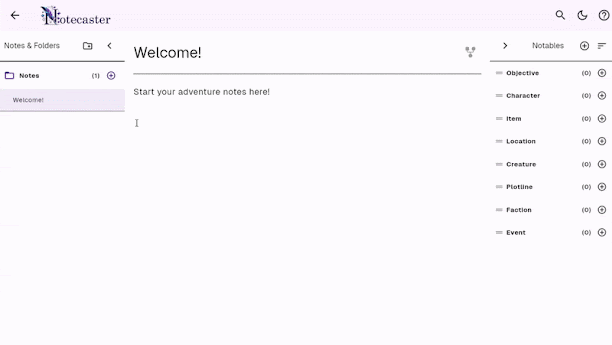We all hate data entry. For many, it will disappear.
Let's be honest: We all hate data entry. It's the tedious, often error-prone task that eats up valuable time and focus, whether you're updating CRM fields, logging meeting notes, or even meticulously tracking progress in a TTRPG campaign. But I have some encouraging news: for many of us, this tedium is on its way out.
The Universal Pain Point and a Glimmer of Hope
The frustration with repetitive data input is universal. It's the task salespeople dread after a call, the administrative burden that pulls focus from strategic work, and for me, the meticulous note-taking that sometimes felt like a chore in my roleplaying games. This shared annoyance is what sparked the core idea behind Notecaster.
Imagine a world where those soul-crushing data entry tasks simply... vanish. For many, that future is closer than you think, thanks to the rapid advancements in Artificial Intelligence.
Beyond Button-Clicking: The Non-Declarative Shift
The traditional workflow of button click -> data entry -> save -> repeat is woefully out of date in many cases. We're moving towards a more intelligent, automated approach where the system infers and populates information based on context.
Take updating CRM fields, for example. Instead of laboriously typing in notes and then manually updating individual fields, AI can analyze call transcripts or summaries and automatically populate relevant information. This isn't just about saving time; it's about improving accuracy and freeing up skilled professionals to focus on higher-value activities.
Notecaster's Approach: Narrative Driving Structure
This "disappearing data entry" is a core principle behind Notecaster. When a TTRPG player finishes a session, instead of spending hours organizing notes and cross-referencing characters and locations, they can simply trigger an AI-powered workflow. Notecaster then intelligently analyzes their natural language notes to identify and link "Notables" (characters, places, items). It automatically creates new Notable entries if needed and, crucially, adds contextual snippets explaining their relevance to the current note.
This non-declarative approach means the player's narrative itself drives the creation and connection of data. The manual, tedious work of explicitly defining each relationship is largely automated, leaving the player to simply review and validate.
The New Paradigm: Integrate, Automate, Validate
This shift towards integrate -> automate -> validate is the key to banishing much of the data entry we despise. Think of the possibilities:
Sales: AI analyzing call recordings to update lead scores, pipeline stages, and contact details.
Customer Service: Automatically categorizing support tickets and extracting key information from chat logs.
Project Management: AI summarizing meeting minutes and updating task statuses.
The potential is vast. The key is integrating AI into existing workflows to automate the data extraction and entry process, then allowing humans to quickly validate the AI's work. This validation step is crucial for ensuring accuracy and building trust in the automated system.
The Future is Less Data Entry, More Insight
For many, the days of tedious manual data entry are indeed numbered. By embracing AI-powered automation and focusing on validation rather than creation, we can free ourselves from this burdensome task and focus on more strategic, creative, and human-centric work.
Where do you see the biggest opportunities for AI to make data entry disappear in your field? I'd love to hear your thoughts.





Comments
Post a Comment